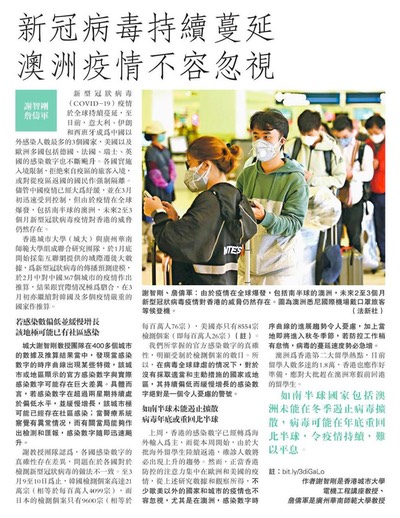We build on the data and estimated parameters obtained for 367 cities in a prior work, and establish a library of profiles (sets of codes) of different spreading profiles. Suppose a new outbreak has occurred in a given population. The numbers of infected and recovered cases during the early phase of the spreading form an initial profile. This initial or incomplete profile is compared with the historical full profiles obtained previously. Then, by selecting the best fit historical profiles, we identify the candidate parameters for prediction of the future spreading profile in that given population.
Results of this study show that the spreading of SARS-CoV-2 in most cities in South Korea will peak between March 8 and March 16, 2020, and Italy will peak between March 12 and March 26, 2020, while Iran would have its peak around March 22, 2020. For Korea, we predict that Daegu and Gyeongsang North Road would have around 7,619 and 1,287 people eventually infected (i.e., 0.306% and 0.062% of the city's population), respectively, whereas the number of infected individuals in other cities in South Korea would be fewer than 300, i.e., less than 0.01% of city population. For Italy, we predict that Lombardi and Amelia Romagna would eventually have about 4,784 and 1,555 infected cases (i.e., 0.399% and 0.162% of region's population), respectively, and the number of people eventually infected in other cities in Italy would be below 700 (< 0.05% of city population). Moreover, Iran would have around 14,450 infected individuals, i.e., 0.018% of its population, of which around 2,498 and 1,698 will be reported in Tehran and Zanjan (i.e., 0.39% and 0.2% of the city's population). From the progression trends of these three countries, provided stringent measures are in place, the epidemic would come under control before the end of April, 2020.
For details of the predicted progressions for cities in South Korea, Italy and Iran, please refer to our paper. Some key statistics (generated on March 8) are shown below.
Statistics of peak times in South Korea (left); Italy (middle) and Iran (right).
Statistics of proportion of eventual infected population in South Korea (left); Italy (middle) and Iran (right).
Statistics of eventual infected population in South Korea (left); Italy (middle) and Iran (right).
*Our findings are based on data provided by official source from the respective countries.
Discussion
Our prediction on the South Korean cities has revealed a very rapid progression of the epidemic, with 5,000 infections emerged within 10 days and peaks to be expected in most cities or regions within about 2 weeks. The Korean authorities have managed to test an overwhelmingly large number of people (140,000) within a short time, thus preventing a large number of infected and infectious individuals not being quarantined in time. This strategy has an obvious advantage of offering a clear picture of the extents and locations of the infected individuals in the country at the early phase of the epidemic progression. The epidemic progression is found to be more rapid than typical, reflecting on the effectiveness of the control measures being taken.
Italy has the second highest death toll after China, reaching 197 on March 6, 2020. The fatality rate is about 4%, which is the highest in the world. With infection cases soaring to 3,916 (as of March 6, 2020), Italy had implemented control measures to contain the spread of the virus by shutting down schools and suspending public events in regions where outbreaks were reported. The epidemic is expected to progress in a typical pace (with the present set of parameters), unless more stringent measures are in place.
The situation in Iran is also critical, with the number of infected cases escalated to over 4,000 in less than 2 weeks. Iran has reported death of two lawmakers as of March 7, 2020, and has been struggling to control the contagion, which has spread to 31 provinces. The progression profile is again typical, however, expecting to peak in around 3 weeks. Like Italy, most cities show typical spreading profiles, and the peaks and subsequent decline are not expected to advance sooner unless more stringent measures are implemented to control the contagion.
Finally, depending on the effectiveness of treatment, recovery rates vary, the epidemic progressions for the three countries are expected to subside by the end of May, with South Korea expected to recover sooner than the others.
Updates on May 17, 2020
The results were updated on May 17 in a revised paper published in PLOS ONE. See publication page.
